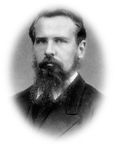

HISTOLOGY
Histology is that branch of science which studies the fine structure and functions of tissues and the cells of the body. It addresses the normal appearance of tissues and cells under the microscope and often relates structure to function. It is different from histopathology which addresses changes elicited by disease on normal tissues and cells of the body.
The term histology comprises two syllables: histos and logia. They both ancient Greek. The prefix histos means tissue and the suffix logia means study of something or knowledge. The term tissue was invented by the French anatomist and pathologist Marie Bichat who distinguished by the naked eye 21 different types of tissues in the human body; Bichat postulated that organs are collections of tissues.
Medical histology is one of the basal medical sciences, and its comprehension is an essential prerequisite for understanding pathology and physiology. As a subject, histology comprises three subdivisions namely, cytology, general histology and systemic histology.
-
Cytology is that branch of histology which is concerned with the study of the fine structure of cells and their components (nucleus, cytoplasm, cell membrane), relating structure to function.
-
General histology is that branch of histology which addresses the details of the microscopic features of the four primary tissues of the body (epithelium, connective tissue, muscle, nervous tissue)
-
Systemic histology, which is also known as organology, is the study of tissue components of organs and systems of the body (digestive, respiratory … etc)

Langerhans

Golgi

Malpighi

Cajal
History
The real father of histology is the Italian scientist and physician Marcello Malpighi. He was the first to see tissue structures under the microscope. Examining the kidney under the microscope he discovered the renal corpuscles which have been named after him as Malpighian corpuscle. Furthermore, examining the lung under the microscope, Malpighi was the first to see and discover blood capillaries. He also discovered Malpighian lymphoid corpuscles of the spleen.
Anther Italian histopathologist renowned for discoveries, is Camillo Golgi who invented the silver staining technique and discovered the Golgi apparatus. Camillo Golgi and the Spanish scientist Ramony Cajal won the 1906 Noble prize in Medicine in recognition of their work on the structure of the nervous system and the neuron doctrine.
We must also mention the German scientist and physician Paul Langerhans who discovered the pancreatic islets of Langerhans and Langerhans cells of the epidermis whilst he was still a medical student.



